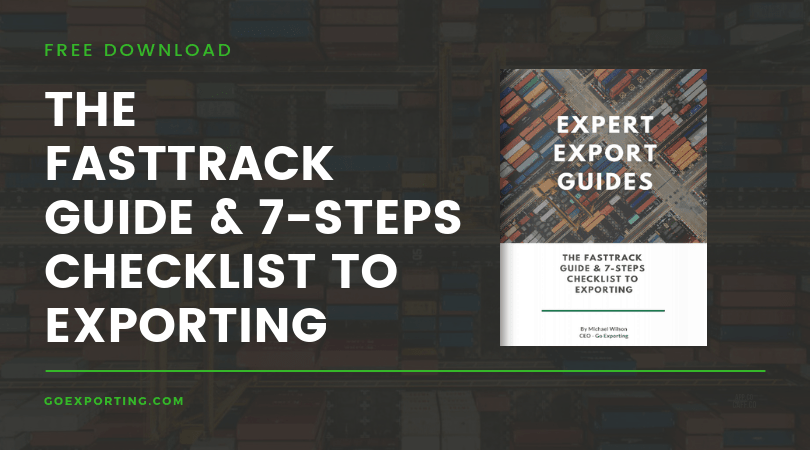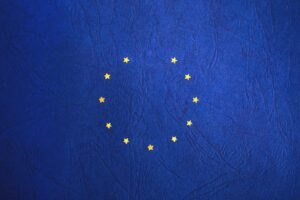New HMRC data has shone a light on the difficulties exporting UK businesses have faced over the last three years.
The number of UK businesses exporting goods and products into the EU trading bloc fell by 33% between 2020 and 2021, from 27,000 to 18,000.
Additional red tape as a result of Brexit has been blamed as the primary cause.
Michelle Dale of UHY Hacker Young told City A.M. that: “Businesses are not getting enough support from the Government to navigate the post-Brexit trading minefield.
“A lot of SMEs can’t afford professional advice to cope with Brexit-related red tape. Many are likely to have decided trading with the EU is not worth the cost.
“Fewer UK companies exporting to the EU will result in lost opportunities for growth and expansion in Europe.”
Despite the negative data trend, HMRC has urged caution when comparing data from before January 2021 as the way in which the government collects data has changed.
Get exporting support
Exporting products and services overseas is a fantastic way to grow a business, but it’s a difficult switch for any organisation to make even in the best of business environments.
That’s where we at Go Exporting can help.
Our international trade specialists support firms of all sizes to research and identify new markets, create winning exporting strategies and implement their new international trade operations.
Learn more about how we help businesses just like yours here.
Exports of steel heading from Great Britain into Northern Ireland could soon face huge tariffs after the EU changed steel quota rules.
Enacted due to the war in Ukraine and relating to the Northern Ireland protocol, new tariffs on certain steel products could hit 25%.
Industry group, UK Steel, has already appealed to the government to suspend tariffs immediately, saying it’s ‘farcical that UK producers are now prevented by these tariffs from selling goods to customers in their own country’.
Steel exports from GB into Northern Ireland had been tariff-free thanks to the tariff rate quota covering UK exports into the EU.
The TRQ rules mean that certain products can be moved from country to country without tariffs being paid, so long as they don’t breach a quota mark.
But the EU updated these rules in light of Russia’s invasion of Ukraine, intended to give EU steel importers more flexibility in the absence of trading with Russia – resulting in quotas of GB supplies into NI hitting the limit faster than usual.
Read more: Import taxes to be cut on goods from developing nations
Steel industry specialist Sam Lowe told the BBC that: “Whereas before the UK had access to its own country-specific quota, which it could rely on to accommodate steel moving from Great Britain to Northern Ireland, now these movements would be covered by the ‘other countries’ quota which could fill up much more quickly, given the entire world has access to it.
“Once it is full: 25% tariff on steel moving from Great Britain to Northern Ireland.”
The UK government has so far commented to say this is an example of the Northern Ireland Protocol ‘needlessly damaging trade within the UK’.
E-commerce marketing is hard enough to conquer before you begin to factor in targeting audiences outside of the country you’re based in.
However, the potential rewards for boldly selling where your online store has never sold before are huge. In fact, the average SME in the UK that begins to export can see total sales revenues increase by £300,000 each year.
However, only one in 10 businesses do sell internationally, and there are numerous reasons why.
First, lack of internal resources and knowledge made getting started with internal selling a daunting prospect. Where do you begin? How do you ship orders abroad? What are the customs procedures?
And then there are digital considerations to factor in too, including calculating shipping rates for different countries and, crucially for this article, how to actually generate those first international sales to make your efforts worthwhile.
If you’ve established that selling internationally is right for you, and have explored the technical, legal and procedural processes to make it work, then the next step is deciding on how to actually drive brand awareness, traffic and sales from your new target territories.
In short, how do you choose the right digital channels, and what are the international e-commerce considerations of each one?
Let’s dive right in.
Organic search
Organic search, or SEO, is the means of driving traffic from the likes of Google and Bing. SEO traffic tends to be the lifeblood of most websites, bringing in ‘free’ clicks and sales on a typically sustainable level.
But driving those first clicks requires gaining positive search engine rankings. That is, you need to be ranking on page one to really start generating some visibility for your website, for the keywords that matter most to your business. After all, the best place to hide a dead body is on page two of Google search results!
Here are some international SEO considerations before you get started:
- What language is most spoken and searched in your new target territory? Do you need to offer a translated version of your website?
- If yes, then you need to ensure that translated pages are indexable by search engines. That is, they render their own URL which can be crawled by Google’s crawl bots!
- How powerful are your competitor’s websites in that country? Check your site’s domain authority versus theirs.
- What countries are the majority of your backlinks derided from? Consider implementing a linkbuilding campaign to generate blogger, digital PR and directory links from sites with a top level domain that matches the country you’re expanding into (for example, .es websites in Spain).
- Make sure you’re optimising your website for the keywords that consumers in your target country are actually searching for. They could be searching for different variations, for example, bin versus trash can. Or, they could be searching in a different language altogether.
Social media
Social is a key channel for most businesses, but especially when it comes to e-commerce marketing. Building large social communities, turning customers into social advocates and placing your ads in front of the people most likely to buy your products are reliable revenue streams for online brands… so long as you have the right strategy in place.
The fundamentals of good social media marketing tends to hold true in whichever country you’re doing business in. Create great content, put it in front of the most relevant people, and entice them to make a purchase.
Read more: How to ensure your website attracts an international audience
But what questions do you need to ask about your social media strategy as you go from local business to international brand?
- If influencer marketing has been a success in your base country, then research which influencers are most relevant to your new target territory.
- Do you need to set-up separate social channels in a different language?
- How competitive is the new country’s social space in your niche? Who are the main competitors?
- Is the target demographic for your product the same in one country versus another?
- Which social platforms are your target audience using the most? This can change drastically from country to country, especially if targeting an entirely new continent.
- What are the social norms and customs that may affect your marketing messages and creative designs?
Paid search
Our final consideration for this article is paid search. PPC, such as Google AdWords or Bing Advertising, is a method of paying for clicks from search engines, and placing your ads in front of people either when they’re directly searching for what you have to offer, or by targeting audience segments that are most likely to correlate with your perfect customer.
Like with social media, the fundamentals of paid search in any territory remain steadfast: the right targeting, the right placement, the right messaging and the best landing page experience will all help to drive better results, and a profitable return on investment.
But as you expand your campaign targeting to new countries, it’s worth also considering:
- What language do target consumers in the new country most often use search engines in?
- Do you need to translate your ad copy? If so, do it professionally as poor translations (even those provided by Google Translate) will reduce trust and harm conversion rates.
- What keywords are people searching for? They may differ from your home country, and could be in an entirely different language most of the time.
- What websites are your target customers most engaged with in the new territory? This will feed into your display placement campaigns.
- Does your landing page have the right trust signals? The audience in your new target country may never have heard of you, so include great reviews and relevant trust logos on your site – preferably reviews and logos that mean something to those consumers.
- Offer the right delivery options and competitive pricing. It may be preferable, albeit a big strategic job, to distribute popular product lines directly from within the new export market to speed up delivery and cut costs.
Want to learn more? We created a free international marketing whitepaper that goes into more detail about the specific marketing channels available to you, including strategic considerations and traditional marketing avenues too.
The UK is set to cut import taxes on hundreds of products from developing nations to help boost trade.
Covering 65 developing countries, products including clothing and shoes could benefit from zero or lower tariffs in a move that has been created by The Developing Countries Trading Scheme.
The scheme, which builds on similar programs the UK was part of whilst a member of the EU, builds on a list of thousands of products that developing nations can already export into the UK, including 99% of goods imported from Africa.
The government hopes the scheme will promote trading diversity and support developing nations to drive prosperity and help eradicate poverty. It will also support retailers in the UK to bring off-season products from abroad and onto shelves, such as cucumbers, without having to increase prices.
International trade secretary, Anne-Marie Trevelyan, said that: “As an independent trading nation, we are taking back control of our trade policy and making decisions that back UK businesses, help with the cost of living, and support the economies of developing countries around the world.”
Read more: Exports rise but UK trade deficit hits record levels
She continued: “UK businesses can look forward to less red tape and lower costs, incentivising firms to import goods from developing countries.”
New data from the Office of National Statistics has found that the UK’s trade deficit has increased at a record rate.
The latest figures from the ONS show a fall in the value of imported and exported goods, creating a quarterly trade deficit of £27.9bn – up £2bn on the previous period.
This marks the biggest jump in the gap between the value of exports and imports since 1997, with soaring energy costs, inflation and Russia’s invasion of Ukraine all contributing to an increasingly difficult trading environment.
In detail, imports increased by £14.3bn, with exports also rising but more slowly to £12.3bn, leaving a total trade deficit against the UK’s GDPR of 4.5%.
More positive however was the UK’s trading relationship with the EU, with the value of goods moving back into the European Union rising 16.3% thanks in part to the re-exportation of fuel, ships, aircraft and mechanical machinery.
Exports to the rest of the world also rose by just under 9%.
This leaves a confusing picture as to how the UK economy is performing on the international stage, and just how able businesses have been to mitigate not only Brexit, but also recover from the pandemic and now mitigate inflation, war-related supply disruptions and surging fuel costs.
Read more: HMRC urges firms to adopt Customs Declaration System or ‘risk being unable to bring goods into UK’
Director general of the IOE&IT, Marco Forgione cautioned that: “Although superficially the ONS figures look positive, the IOE&IT Monthly Exporter Monitor shows that fewer companies are exporting and fewer goods are being exported.
“This indicates there is significant inflationary pressure building in the economy.”
HMRC has warned UK firms yet to begin using the new Customs Declaration System that they may soon be unable to import products into the country.
Over 3,500 firms risk significant delays if they don’t move to the new service within the next two months and are being warned that registration and adoption aren’t instantaneous either.
HMRC’s director of programme and operational delivery for borders and trade, Julie Etheridge, noted, “There are now only two months left until businesses must use CDS for imports. Businesses need to move now or risk being unable to bring their goods into the UK.
“Registering takes time so businesses should start moving to the Customs Declaration Service to ensure a smooth transition and avoid disruption to their business.”
The new Customs Declaration System, brought in following the UK’s departure from the EU, includes a number of significant changes for importing businesses, including;
- New data element fields with specific formats
- New dashboards to monitor and manage declarations
- A two-part customs procedure code, with a four-digit code combined with one of up to 99 three-digit additional procedure codes (APCs)
- Requirement for more detailed customs information
Vicky Payne of the IOT&IT additionally commented that: “With the new changes coming into place, I would highly recommend that firms properly understand all the elements of a customs declaration in addition to having access to the relevant platforms and other preparations for CDS.
“It is evident that traders will need to make several changes to adjust to the new system and the IOE&IT has products to support your learning.”
Businesses requiring more information can do so on the government’s website here.
If your firm lacks the time or internal expertise and resources to manage the shift, then Go Exporting can help. Our Customs & Compliance Reports cover all aspects of your trade with a specific country or trade bloc, including the EU.
Read more: Exports to EU fall to lowest level in 11 years as imports continue to rise
The result will provide you with a complete picture of the rules as they apply to your business and recommend the best processes and procedures for you to follow to meet both legal requirements and the goal of ‘least hassle’ for you and your customers.
The UK and the Gulf Cooperation Council have kicked off the first round of trade talks in Riyadh in a deal that could cover more than £33bn in annual trade.
The GCC, which includes Bahrain, Kuwait, Oman, Qatar, Saudi Arabia and the UAE, would be equivalent to the UK’s seventh-largest export market, with demand for international products and services in the region expected to rise to £800bn by 2035.
The deal itself is expected to be worth around £1.6bn a year to the UK economy.
These latest talks follow similar discussions with Canada and Mexico earlier this year.
UK international trade secretary, Anne-Marie Trevelyan, commented on the kick-off of trade negotiations that: “Today marks the next significant milestone in our 5-star year of trade as we step up the UK’s close relationship with the Gulf.
“Our current trading relationship was worth £33.1 billion in the last year alone. From our fantastic British food and drink to our outstanding financial services, I’m excited to open up new markets for UK businesses large and small, and supporting the more than ten thousand SMEs already exporting to the region.
“This trade deal has the potential to support jobs from Dover to Doha, growing our economy at home, building vital green industries and supplying innovative services to the Gulf.”
Key winners from any trade deal would include British farmers and producers, whilst tariffs on items such as chocolate, baking products, biscuits and smoked salmon could all be cut.
A trade agreement would also open up the door to more inward investment from the Gulf into the UK, with investments from the region already supporting around 25,000 jobs in the UK alone.
The government has promised a ‘bonfire’ of the current barriers to international trade for exporting business in the UK.
International trade secretary, Anne-Marie Trevelyan made the announcement as part of a new drive to reduce red tape and barriers to exports around the world – estimated to be worth £20bn in economic benefit for British firms.
There are 100 priority issues that have been identified by the Department for International Trade, including regulations on meat exports to Asia, rules delaying British medical devices entering South Africa, and restrictions on UK lawyers operating in Japan.
The move is part of ongoing post-Brexit work to strengthen or create new trading routes for UK businesses outside of the EU.
Trevelyan said in a statement that: “Every week we remove trade barriers somewhere around the world, helping more and more businesses all over the country.
“We know that businesses who export pay higher wages and are more productive than businesses who do not, but too often, complex trade rules and practical obstacles prevent them selling overseas.
“This bonfire of the barriers will grow our economy by allowing our brilliant businesses to satisfy the enormous global appetite for their goods and services.”
Whilst Brexit has caused major upheaval for the majority of import/export businesses in the UK, leaving the European Union has allowed the UK government to pursue independent trade agreements around the world, as well as addressing specific blockers on British trade.
These include opening the Chinese market for UK lamb for the first time, worth £1.5bn a year, as well as beef in South Korea which within the next five years is hoped will open a market worth £2.5bn to British producers.
So far, the DiT has identified and resolved around 400 trade barriers in the last two years, including barriers for individual businesses, including VetPlus where overcoming bureaucratic issues enabled the Lancashire-based firm to export pet supplements to India in a move worth £1.4m.
VetPlus EMEA regional manager, Anthony Stewart, commented that: “Being able to meet the different compliance requirements across the markets we operate in is extremely important to ensure the availability of our products for vets and pet owners.
“Recently, we ran into a challenge in exporting our products to India and the support from the DIT was fantastic. They were able to put us in touch with the right people to help us liaise with the Indian authorities and facilitate the appropriate documentation to enable us to re-start the export of our products to India.”
Trade woes for UK businesses in the face of Brexit are continuing into 2022 as exports to the EU fall to their lowest level since 2011.
Data newly released from Eurostat shows how EU imports from the UK fell by 16.4% over a two-year period. In start contrast, imports by the EU from non-EU countries rose by 30% over the same period.
The heightening trade imbalance is due to a number of factors, including the UK’s departure from the EU. But Covid-19 also had and continues to play a big factor. Eurostat’s report notes that ‘the COVID-19 crisis caused both exports and imports between the EU and the United Kingdom to fall in 2020. Imports reached a minimum of € 7.5 billion in January 2021. By December 2021 they had recovered to € 13.5 billion. Exports reached a minimum of € 14.8 billion in April 2020. By December 2021 they had recovered to € 24.8 billion’.
Despite the fall in UK exports into the EU, last year the United Kingdom was still the second-largest partner for EU exports of goods, and the fourth largest partner for UK imports of goods.
The UK’s trade deficit has been growing weaker across the board, with data from the Office of National Statistics showing the difference between goods and services imported rose to its highest level since 1997, rising to £51.7bn in Q1 this year.
Read more: ‘Same nightmare week after week’ for UK exporters
However, economists from both Eurostat and the ONS have noted that the latest data should be treated with some caution due to a change in methodology.
UK businesses are continuing to struggle with post-Brexit trading rules as export bosses warn that life outside the EU is becoming a ‘nightmare’ as fears grow that the Northern Ireland protocol could lead to a trade war with Brussels.
Exporting firms have warned that costs and red tape have seen doing business with the EU become more difficult, cut into margins and take too long.
One such exporter, Mark Brearley of kitchen equipment firm Kaymet, said to The Guardian that: “There’s a sense of, ‘Oh God, here we go again.
“There are loads of things I could’ve been doing if it wasn’t for these problems. We could do things that take us forward, rather than back.”
Owner of men’s fashion brand Rivet & Hide shared his own thoughts, adding that: “It’s really frustrating. I hear Johnson boasting about free trade and all the rest of it.
“I don’t know how he’s got the brass neck to talk about us doing free trade when basically he’s the one who’s imposed sanctions on our business.
“We were freely trading with the EU and now we’ve had tariffs imposed on us through our Brexit deals.”
Since 2019, key export categories including clothing, fruit and veg, cars, livestock and fish have all seen large decrease, with total exports down 8.3%.
However, there are signs that UK firms are beginning to look further afield to grow their international sales.
Data from the Food and Drink Federation found that exports to non-EU countries rose 16.2% in the first three months of the year, almost 11% higher than in Q1 2019.
Read more: Rise in non-EU food and drink exports for UK firms
Total non-EU exports of food and drink are now worth a record £2.3bn, with sales to Australia, Canada, India, Japan and the US showing the most growth. Beef exports rose 80%, with whiskey, chocolate and gin also seeing sustained growth.
Whilst food and drink exports to the EU still remain higher at £3bn, the rise in sales further afield may be a sign that UK firms are starting to broaden their horizons in the wake of Brexit.









